|
|
General: MARY MAGDALENE (ESTRELLA DE OCHO PUNTAS)-OCTAVO DIA (BODAS DE CANA-SAB. CREAC.)
Elegir otro panel de mensajes |
|
|
The Druids had a Solar Wheel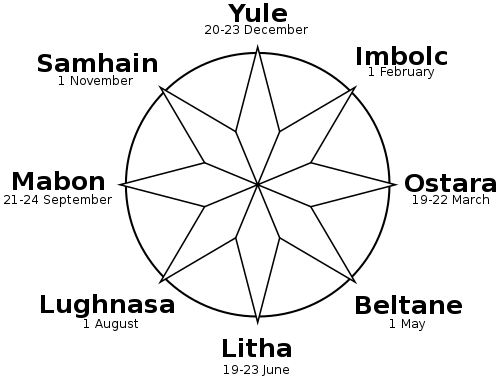 Druids had a Jewish connection the floors of the Holy Sepulcher may reflect the solar wheelRennes Chateau is illuminated by the stained glass showing the Sun King and the Magdalene Halo shines on the floor Druids had a Jewish connection the floors of the Holy Sepulcher may reflect the solar wheelRennes Chateau is illuminated by the stained glass showing the Sun King and the Magdalene Halo shines on the floor At the Holy Sepulcher there are two circular star patterns on the marble floorsone for Christ ....a sun with wavy linesthe Magdalene star is the straight lines similar to a compass At the Holy Sepulcher there are two circular star patterns on the marble floorsone for Christ ....a sun with wavy linesthe Magdalene star is the straight lines similar to a compass 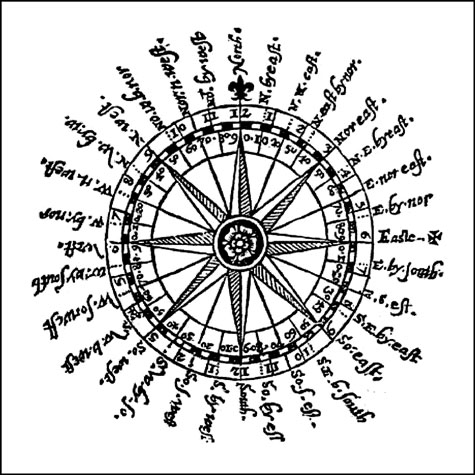 The Crusaders building the Holy Sepulchre had a understanding of the stars and the ending of the Pisces Age and the coming of the Water Bearer....Magdalene with her tears and her vase may reflect the Age of WOMEN The Crusaders building the Holy Sepulchre had a understanding of the stars and the ending of the Pisces Age and the coming of the Water Bearer....Magdalene with her tears and her vase may reflect the Age of WOMEN
NUMERO 322/ 8 DIVISORES/ NUMERO 8/ RESURRECCION/ LUGAR SANTISIMO/ CUBO/ NUMERO DE ORO PHI/ NUMERO 23 / SIRIO / ESTADOS UNIDOS / KABA (ISLAM) / 911
Divisors of the Number 322
- 322 has 8 positive divisors: 1, 2, 7, 14, 23, 46, 161, 322
- The sum of the positive divisors is 576
- 322 has 7 proper divisors: 1, 2, 7, 14, 23, 46, 161
- The sum of the proper divisors is 254
- 322 is a deficient number since the sum of the proper divisors is less than 322
- 322 is not a perfect number
- 322 is not an abundant number
|
|
|
|
|
|
Davinho can you see Mount Cardou from the equilateral triangle off the top of the Magdala Tour? So noone can say why someone is carving the 8 pointed star which is the pattern at Rennes les Bains, The Magdala Tour floor is a variation of the eight pointed star, and the MicMac tribe star of their nation who reside in Nova Scotia the Grand Council flag of the MicMac is the red cross on a white background which the crusaders used ...added is the crescent moon and pentacle I just find it fascinating that at Bugarach and at the Devil's chair and at Cardou the eight pointed star is carved the one at Cardou looks like it would be difficult to do  and Occitan cross up on Mount Cardou
I notice they specifically state Templar shaft
on the Occitania flag the cross of Occitan and the 7 pointed star
Occitan literature was glorious and flourishing at that time: in the 12th and 13th centuries, the troubadours invented courtly love (fin'amor) and the Lenga d'Òc spread throughout all European cultivated circles. Actually, the terms Lenga d'Òc, Occitan, and Occitania appeared at the end of the 13th century.
_________________
Everything is Connected and there are no
coincidences
|
|
|
|
|

Babylonian Origins of the Eight Pointed Cross
The Babylonians worshipped the god 'Bel'. The Syrians called this god 'Baal' and, like the Egyptian goddesses Hathor Isis and Bat, was associated with bull worshipping. The sacred meaning of Baal has been lost in the mist of history, hence the Babylonian confusion (Tower of Babel). The Greek rendition of the word Babel translates not only into 'Confusion but also into the 'Gate of Bel', the gate of the god Bel. In Hebrew, 'Ba-el' means "Gate of God." All of these gods and goddesses were associated with a bull myth and represented Taurus around the time the Vernal Equinox Sun was in the Silver Gate in 4468 BC.
The Celtic druid Beltaine festival probably has its origins in the celebration of the rebirth of the Babylonian God Bel (as in "Beltain") at the Vernal Equinox in 4468 BC. Beltaine was a cross quarter day celebrated on the first of May when huge bonfires were lit on holy hills to celebrate the start of the summer season. By the time druids celebrated Beltaine, the original celebration date and its Babylonian sacred origins and significance (Great Celestial Conjunction) was lost in the Babylonian confusion. At the first of November, the start of the winter season was celebrated by the druids and this festival was called "Samhain." Neo-pagans, known as "Wiccan," later adopted the Beltaine festival. They celebrated the death and rebirth of their horned God, mentioned by many occultists such as Eliphas Levi, by the name "Baphomet." The horned God echoes the original veneration of the horns of the bull by the Sumerians, Babylonians and Egyptians, but the exact significance of the horns (as in the Isis mythology) and their symbolic reference to the birthplace of the Sun, was lost.
It's therefore striking to notice that the sacredness of the eight-pointed cross was "re-discovered" by the Wiccans since they celebrate eight solar holidays forming an eight pointed cross in a solar year associated with the equinoxes, solstices and cross-quarter days (halfway in between the equinox and the solstice)
The origins of the eight-pointed cross and its solar significance, however, must be dated back to the Sumerians and Babylonians, who worshipped the Sun God 'Utu' (Sumerian) or 'Shamash' (Babylonian). The symbol of Utu/Shamash was an eight-pointed cross . This eight-pointed cross was composed of two superimposed four-pointed crossed of what the authors believe to be a symbol of the Great Celestial Conjunction.
|
|
Utu/Shamash, the ancient Sun God of Mesopotamia
|
Ezekiel’s vision
Herschel explains on his website that the vision of Ezekiel recounted in the Old Testament is in fact the recount of an ancient visitation from space. Herschel is in good company with this hypothesis; many authors before him have suggested exactly the same thing. In fact it makes perfect sense since Ezekiel in his vision did see a wheel within a wheel coming down from the sky out of a whirlwind surrounded by fire. In addition the wheel had portals (eyes) around the wheel suggestion strongly that it could be a UFO.
Ezekiel 1:18 (KJ version) 18As for their rings, they were so high that they were dreadful; and their rings [were] full of eyes round about them four.
The alien visitation explanation for Ezekiel’s vision falls short, however, when one takes the astrological connotations of Ezekiel’s vision into account. The eyes around the wheel are not portals of a UFO but the constellations along the zodiac. First of all, Ezekiel’s vision happens on the bank of a river. While Herschel has failed to recognise the importance of the river in all of his star maps except for his initial discovery of the astrological meaning of the pyramids along the Nile, the reader of this article will by now be alarmed that the river in Ezekiel’s vision may in fact be a metaphor for the Milky Way.
Ezekiel 1:3 (KJ Version) 3The word of the LORD came expressly unto Ezekiel the priest, the son of Buzi, in the land of the Chaldeans by the river Chebar; and the hand of the LORD was there upon him.
Ezekiel explains that he saw four winged creatures with four faces each in his vision. They had the overall appearance of a human but they had the feet of a calf.
Ezekiel 1:7 (KJ Version) 7And their feet [were] straight feet; and the sole of their feet [was] like the sole of a calf's foot: and they sparkled like the colour of burnished brass.
The four faces of each of the four creatures looked like this:
Ezekiel 1:10 (KJ Version) 10As for the likeness of their faces, they four had the face of a man, and the face of a lion, on the right side: and they four had the face of an ox on the left side; they four also had the face of an eagle.
These four faces are the four fixed signs of the zodiac, the face of a man (Aquarius), the face of a lion (Leo), the face of an ox (Taurus) and the face of an eagle (Aquila). Aquila is a constellation very close to Scorpio. Hence, the four faces of the four creatures in Ezekiel’s vision represent the so-called fixed signs of the zodiac (Leo, Taurus, Aquarius, Scorpio) that form a perfect four-pointed cross. During a Great Celestial Conjunction when the Sun is on the Milky Way at the equinoxes and/or solstices, these four zodiac signs rise heliacally, meaning before the Sun. This is why the ancient fixed signs of the zodiac denote the Galactic Cross!
|
|
Taurus rises just before the Sun at the summer solstice of the Great Celestial Conjunction era-2012
|
|
|
Aquila rises just before the Sun at the winter solstice of the Great Celestial Conjunction era-2012
|
While the Sun resides in 5° Gemini (sidereal zodiac) at the summer solstice of 2012, Taurus is the last constellation visible before the Sun rises and blurs Gemini which is next to rise along with the Sun. This is why the ancients were more interested in the heliacal rising of constellations than the constellations of the actual conjunction with the Sun. It is even interesting to learn that Ezekiel could be referring exactly to the Milky Way ecliptic crossing in 5° Gemini (sidereal zodiac) and/or 5° Sagittarius when he writes:
Ezekiel 1:1 (KJ Version) 1Now it came to pass in the thirtieth year, in the fourth [month], in the fifth [day] of the month, as I [was] among the captives by the river of Chebar, [that] the heavens were opened, and I saw visions of God.
Each zodiac sign spans 30° (thirtieth year) of the 360° of the zodiac. The Leo-Taurus-Aquarius-Scorpio cross in the zodiac divides the 12 signs in four groups of three (4th month) while the ecliptic Milky Way crossing itself occurs in 5° of the appropriate signs (fifth [day] of the month= +/- 30 days). Notice that he mentions the river (Milky Way) in the same sentence!
Ezekiel further writes about a wheel within a wheel:
Ezekiel 1:16 (KJ Version) 16The appearance of the wheels and their work [was] like unto the colour of a beryl: and they four had one likeness: and their appearance and their work [was] as it were a wheel in the middle of a wheel.
Suppose the wheel had four spokes (corresponding with the four faces of the creatures), than the wheel within a wheel could be referring to the superposition of two four-pointed crosses! More importantly, these are two separate four-pointed crosses since he’s referring to two wheels! One of these wheels was linked to the Earth!
Ezekiel 1:15 (KJ Version) 15Now as I beheld the living creatures, behold one wheel upon the earth by the living creatures, with his four faces.
This wheel must be the equinox- solstice cross. In the article ‘Crucifying the Earth on the Galactic Cross’ (Smelyakov-Wicherink 2006) this cross is actually called the Earth Cross. The other wheel however was linked to the creatures with the four faces (representing the Galactic Cross):
Ezekiel 1:19 (KJ Version) 19And when the living creatures went, the wheels went by them: and when the living creatures were lifted up from the earth, the wheels were lifted up.
|
|
Earth Cross + Galactic Cross = eight-pointed cross (a wheel within a wheel)
|
It’s important to realize that there were four creatures each with the faces representing the fixed signs of the zodiac. These four creatures esoterically represent the four Great Celestial Conjunctions that occur within a Great Year when one of the wheels turns (Earth Cross) while the other is fixed (Galactic Cross). Exactly four times do the four spokes of the wheels overlap when the wheel within a wheel spins, and these moments thus represent the four Great Celestial Conjunctions.
Finally, Ezekiel spots God in the firmament. He appears in a bow in a cloud. The Milky Way is a bow that straddles the night sky from North to South. It was known to the ancients as either that great River in the sky or the big white cloud of the night sky.
Ezekiel 1:20 (KJ Version) 28As the appearance of the bow that is in the cloud in the day of rain, so [was] the appearance of the brightness round about. This [was] the appearance of the likeness of the glory of the LORD. And when I saw [it], I fell upon my face, and I heard a voice of one that spake.
The four fixed signs of the zodiac are also mentioned in John’s Revelation:
Revelation 4:6-8 (KJ Version) 6And before the throne [there was] a sea of glass like unto crystal: and in the midst of the throne, and round about the throne, [were] four beasts full of eyes before and behind. 7And the first beast [was] like a lion, and the second beast like a calf, and the third beast had a face as a man, and the fourth beast [was] like a flying eagle. 8And the four beasts had each of them six wings about [him]; and [they were] full of eyes within: and they rest not day and night, saying, Holy, holy, holy, Lord God Almighty, which was, and is, and is to come.
This time the four beasts of the Apocalypse are associated with the End of Time (= end of precession cycle)! In Christian art, Christ is often depicted inside a ‘Vesica Pisces’ (representing birth) surrounded by the four beasts of the Apocalypse (representing the Galactic Cross). More surprisingly, often the eight-pointed cross, the wheel within a wheel is depicted as well! Art expressions like the one below are very common; and in many cases, either a four or eight-pointed cross is depicted on the book held in Jesus his hands!
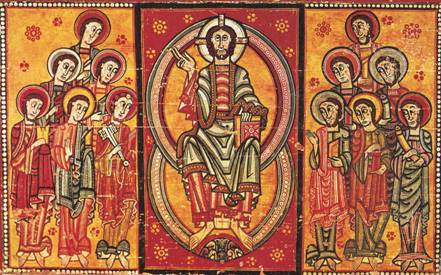 |
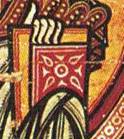 |
Christ inside the Vesica Pisces with an eight-pointed cross on the cover of the book. The twelve apostles esoterically refer to the twelve signs of the zodiac. There are eight pedaled ‘flowers’ all over the painting.
|
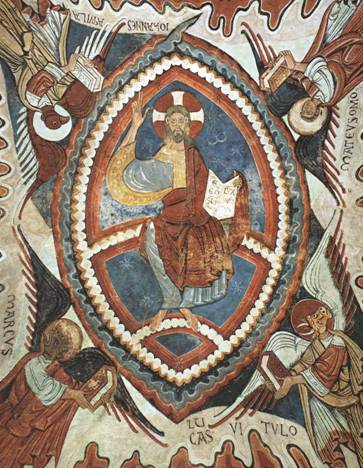 |
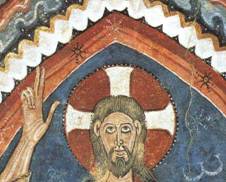 |
Christ surrounded by the four beasts of the Apocalypse, The eight-pointed crosses occur in abundance on the rim of and inside the Vesica Pisces.
|
In all of these art expressions Christ always raises two fingers. What could be the meaning of these two fingers? Is he referring to the two twins Gemini which is his birth place in the precession cycle?
References
|
|
|
|
|
|
LHC Large Hadron Collider project in Geneve (“New Genesis”) as the “Snowpiercer” film’s Sacred Engine |
|
|
|
|
CESAREA DE FILIPO (CLAVE CESAR / SATURNO / CRONO EN EL CONTEXTO A LA TRANSFIGURACION)
SHABBAT = CESAR DEL TRABAJO
BODAS DE CANA= SEPTIMO / OCTAVO DIA
1. Génesis 8:22: Mientras la tierra permanezca, no CESARán la sementera y la siega, el frío y el calor, el verano y el invierno, y el día y la noche.
2. Éxodo 5:4: Entonces el rey de Egipto les dijo: Moisés y Aarón, ¿por qué hacéis CESAR al pueblo de su trabajo? Volved a vuestras tareas.
3. Éxodo 5:5: Dijo también Faraón: He aquí el pueblo de la tierra es ahora mucho, y vosotros les hacéis CESAR de sus tareas.
|
|
|
|
|
Ishtar
De Wikipedia, la enciclopedia libre

Representación de una diosa, probablemente de Ištar/Inanna, en el Museo Británico. Otra posible diosa sería Ereškigal. Sin embargo, no está completamente clara la asociación.

Reconstrucción de la Puerta de Ištar, la cuarta puerta a la ciudad interior de Babilonia.
Ištar o Ishtar era la diosa babilónica del amor y la guerra, de la vida, de la fertilidad, y patrona de otros temas menores. Se asociaba principalmente con la sexualidad: su culto implicaba la prostitución sagrada; la ciudad sagrada Uruk se llamaba la "ciudad de las cortesanas sagradas", y ella misma fue la "cortesana de los dioses". Ištar tenía muchos amantes; sin embargo, como señala Guirand:
"¡Ay de aquel a quien había honrado Ištar, la diosa caprichosa trataba cruelmente a sus amantes de paso, y los infelices desgraciados suelen pagar un alto precio por los favores amontonados en ellos. Los animales, esclavizados por el amor, perdían su vigor nativo: cayeron en las trampas colocadas por los hombres o fueron domesticados por ellos. '¡Tú has amado el león, poderosos en fortaleza', dice el héroe Gilgameš a Ištar, 'y has cavado pozos para él siete y siete! Has amado el corcel, orgulloso en la batalla, y le has destinado el cabestro, el aguijón y el látigo'".
Incluso para los dioses el amor de Ištar fue fatal. En su juventud la diosa había amado a Tammuz, dios de la cosecha, y si hemos de creer a Gilgameš este amor causó la muerte de Tammuz.
Se asocia en otras regiones con diosas como Inanna en Sumeria, Anahit en la antigua Armenia (Urartu), Astarté (Asera) en Canaán, Fenicia y en las religiones abrahámicas. Ištar, Inanna, y estas diosas representan el arquetipo de la diosa madre.
En Sumeria era conocida como Inanna (siendo dos diosas distintas, que representan lo mismo) y posteriormente en Babilonia, y en su zona de influencia cultural en todo Oriente Medio recibe los títulos honoríficos de Reina del Cielo y Señora de la Tierra.
Para Joseph Campbell Ištar/Inanna, que amamanta al dios Tammuz, es la misma diosa que Afrodita y que la diosa egipcia Isis, que alimenta a Horus.[1]
Posición en el Panteón[editar]

Estrella de ocho puntas, símbolo de Inanna/Ištar
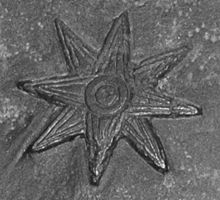
Estrella de ocho puntas en el Museo del Louvre.
Hija de Sin, dios de la Luna, y Nannar, la Luna. Hermana menor de Ereškigal y hermana gemela de Šamaš, en sumerio Utu, dios del Sol. Compañera de Tammuz, en sumerio Dumuzi.
Su número asociado en el panteón de la mitología mesopotámica es el 15.
Características[editar]
Como primer arquetipo psicológico de la dinámica femenina en la historia, y en contraposición a su hermana Ereškigal o a Ki, la diosa de la tierra, Ištar no se puede considerar dentro del grupo de las diosas madre, puesto que su relación con los humanos es más como inspiración para la acción vital que como refugio.[2] Con este carácter, Isthar aparece dentro de la épica del Gilgameš.
Se asocia al planeta Venus, estrella de la mañana y del anochecer. Su símbolo es una estrella de ocho puntas. En su honor, los astrónomos han llamado Ishtar Terra a un continente de Venus. Su animal asociado es el león.

Representación de Ištar/Inanna en una vasija en el Museo del Louvre.
Ishtar era hija de Sin (dios lunar) o de Anu. En carácter de hija de aquél, era la dama bélica; como descendiente de éste, el exponente del amor, la licenciosidad y la intemperancia y la violencia caprichosa hasta el extremo.
Bajo el aspecto guerrero se le rendía culto en Agade y en Sippar, con el nombre de Anunit. También tiene un carácter astral, ya que personifica a varios astros: a Venus, al Sol, la Luna, y a las estrellas reunidas en constelaciones. De ahí deriva la palabra estelar: todo el firmamento lleno de estrellas, proveniente de su nombre.
Ishtar estaba asociada al planeta Venus como estrella de la mañana, y en las fronteras de Babilonia se la representa mediante una estrella de ocho puntas. También se la representa de pie, completamente desnuda, con las manos encima del vientre, o sosteniéndose los senos, o blandiendo un arco sobre un carro tirado por siete leones.
En su aspecto de divinidad amorosa, Isthar es la protectora de las prostitutas y de los amoríos extramaritales, que por cierto no tenían connotación especial en Babilonia, ya que el matrimonio era un contrato solemne que perpetuaba la familia como sostén del Estado y como generadora de riquezas, pero en el que no se hablaba de amor o de fidelidad amorosa.
Ištar no es una diosa del matrimonio, ni es una diosa madre. El matrimonio sagrado o la sacra hierogamia, que se representaba todos los años en el templo babilónico, no tiene un implicación moral ni es modelo de matrimonios terrestres, es un rito de fertilidad altamente estilizado con tonos litúrgicos.
En Sumeria, Inanna es una diosa importante, pero a partir del rey Sargón I de Arcad.
También en la Biblia, en el libro del profeta Jeremías, se le nombra en el capitulo 44 refiriéndose a ella como La Reina del Cielo. Jeremías hace la denuncia de que no se debe adorar a dioses falsos.
Ištar, señora del firmamento, poderosa diosa del amor y de la guerra. Su primer esposo fue su hermano Tammuz. Al morir Tammuz, Ištar descendió a los infiernos para arrancarle a su hermana, la terrible Ereškigal, el poder sobre la vida y la muerte.
Después de darle instrucciones a su sirviente Papsukal, de ir a rescatarla si no regresaba, Ištar descendió a la tierra, de las tinieblas Irkalla. Comenzó valiente y desafiante, gritando al portero que abriera la puerta antes de que la echase abajo. Pero en cada una de las siete puertas se le iba despojando de una de sus prendas, y con ellas se iba despojando de su poder, hasta que llegó desnuda e indefensa ante Ereškigal, que la mató y colgó su cuerpo en un clavo.
Con su muerte, todo el mundo comenzó a languidecer. Pero el fiel Papsukal llegó hasta los dioses y les pidió que creasen un ser capaz de entrar en el mundo de los muertos y resucitase a Ištar con la comida y el agua de la vida. Así es como Ištar volvió a la vida, pero tenía que pagar el precio: durante seis meses al año, Tammuz debe vivir en el mundo de los muertos. Mientras está allí, Isthar ha de lamentar su pérdida; en primavera, vuelve a salir y todos se llenan de gozo.
Esta leyenda es también otra versión para el origen de la llamada "Danza de los siete velos", la cual cuenta que el amor de Ištar por Tammuz era tan grande que decidió también ir al reino de Ereškigal. Con pasión y determinación, cruzó los siete vestíbulos del submundo, y en cada uno de ellos era despojada de una de sus pertenencias: un velo o una joya. En esta historia el velo representa lo oculto, las cosas que nosotros ocultamos de los otros y de nosotros mismos. Al dejar el velo, Isthar revela sus verdades, y entonces consigue reunirse con su amor.
Existe documentación muy importante referida a la descripción de la constelación de Virgo, que tiene su origen en la antigua cultura asirio-babilónica.
Esta constelación siempre ha sido femenina y ha estado especialmente asociada con la tensión existente entre fertilidad y pureza. Los babilonios asociaban esta constelación con la diosa Ishtar, también conocida bajo el nombre de Ashtoreth o Astarté. La última es la precursora de Eostre, la diosa sajona de la fertilidad y de la primavera, cuya festividad era celebrada en el momento del año en que Virgo empieza a ser muy visible en el cielo.
Etimologías y nombres relacionados[editar]
Existen otros nombres relacionados aparentemente al término "estrella"[cita requerida]. Así tenemos: Astarté del fenicio, Ištar del babilonio, Itziar del vasco, Ixchel del maya, Esther del hebreo, Stára del persa, Astaroth del hebreo, Isis/Ast del egipcio .
Referencias[editar]
- ↑ Campbell, Joseph. The Masks of God: Occidental Mythology. New York: Penguin, 1976.
- ↑ Dr. Bernard S. Butler, PhD.
https://es.wikipedia.org/wiki/Ishtar
|
|
|
|
|
El culto a Venus persistió hasta el tiempo de los Aztecas, quienes la denominaban Huey Citlalín, la gran estrella, que en su carácter de estrella de la mañana se relacionaba con Quetzacoatl. Todo indica que los mayas tenían unos grandes conocimientos. No solamente nos legaron un calendario fabuloso sino también cálculos increíbles. Conocían el calendario venusino de 584 días y, sin tener aparentemente los medios tecnológicos actuales, estimaron la duración del año terrestre en 365,2420 días, muy próximo al cálculo actual de 365,2422. Los mayas dejaron cálculos para increíbles períodos de 64 millones de años. Y en las últimas inscripciones se han encontrado cálculos que llegan a la fantástica de 400 millones de años. La fórmula venusina de los mayas parece imposible que se haya podido formular sin la utilización de algún tipo de ordenador: El Tzolkin tiene 260 días, el año terrestre 365 días y el venusino 584 días. Estas cifras esconden la posibilidad de una sorprendente división y suma. 365 es divisible cinco veces por 73 y 584 es divisible 8 veces. Así que la increíble fórmula nos ofrece los siguientes resultados: Para la Luna: 20 x 13 = 260 x 2 x 73 = 37960; para el Sol: 8 x 13 = 104 x 5 x 73 = 37960; y para Venus: 5 x 13 = 65 x 8 x 73 = 37960. Vemos que todos los ciclos coinciden sorprendentemente después de 37.960 años. La mitología maya dice que los “dioses” vendrían al gran lugar de descanso.
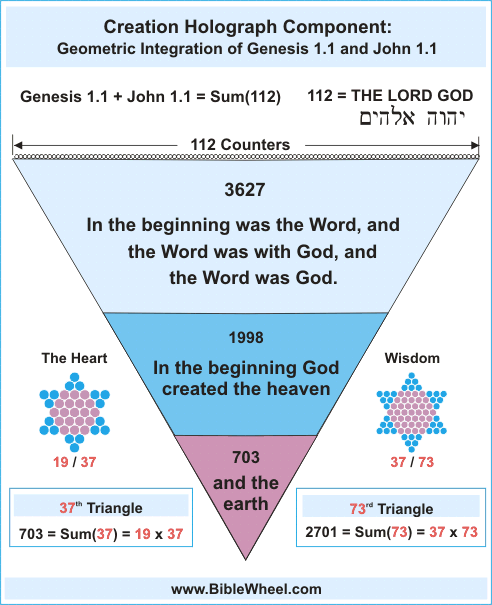


cafepress.com
Favorite
460 × 460 - 26k - jpg |

cafepress.com
Favorite
460 × 460 - 17k - jpg |

pinterest.com
Pastel Geometric Star of David
236 × 236 - 7k - jpg |

zazzle.com
Hanukkah Star of David
512 × 512 - 61k - jpg |

zazzle.com
Hanukkah Star of David
324 × 324 - 26k - jpg |

mygifto.com
JEWISH STAR OF DAVID Travel
480 × 480 - 46k |

amazon.com
STAR OF DAVID Wall Clock
355 × 355 - 34k - jpg |

zazzle.com
Hanukkah Star of David
152 × 152 - 11k - jpg |
"EXPERIMENTO FILADELFIA", LA "MAQUINA DEL TIEMPO"
1776= 48*37= 4*12*37
|
|
|
|
|
This post is filled with connections to the KEY 528. Time to connect the mystic Jakob Bohme, and his 'visions' directly to the Vatican. Below is diagram of his called the Signatura Rerum.Quite famous piece of work in certain 'circles'.  Please understand the modern day Kabbalist references this man's work...And Jakob's work can be traced back to Hermetic alchemy. And Hermetic alchemy is traced back to the engimas called Thoth/Hermes/Mercury.  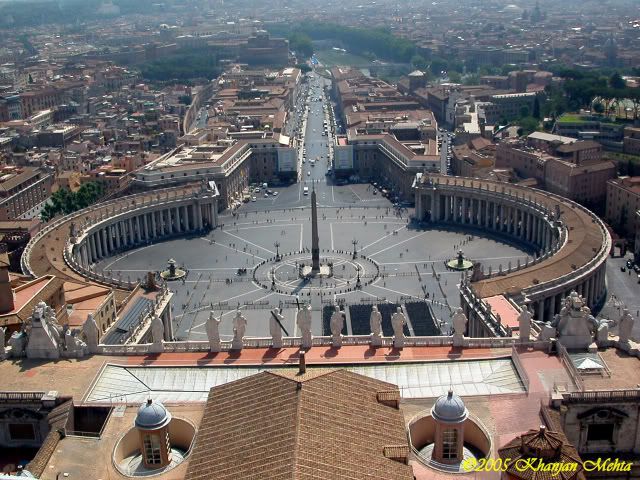 These two images are discussing exactly the same thing. And they are both oriented to make the best comparisons. Personally I did not expect to find what I did... It is far too easy to prove that these two archetypes are intimately connected and pointing us to a specific moment in time. Please observe the 12 statues and the 4 lamp posts, these are the obvious connections, but for the moment, let's move on. Then when we further compare those images to these next two. 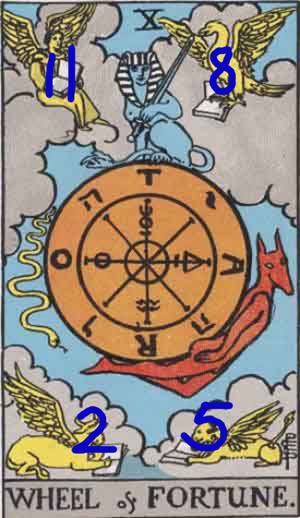 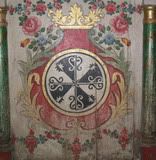 Then you realize the common denominator are the 4 axis of symmetry. And the 4 axis of symmetry means we have an eight-pointed star. The Star of Venus. Maybe Goz can tell us all he knows about Venus? 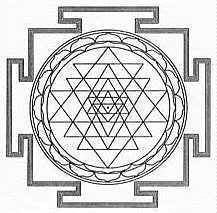 Buddhist Buddhist depiction of 8-pointed star. There are many many ways our most ancient ancestors depicted the 8-pointed Star of Venus but what interests me more is how a modern man, quite small in statue, only 5' tall, a diminutive man driven by a lost love, who apparently was able to duplicate feats only performed by the ancients... move massive blocks of stone by himself.The Empirical physicists, the men who wish to be King, still have NOT figured out, how this uneducated man created the Coral Castle. Here is how Ed Leedskalnin depicted the 8-pointed Star of Venus, and please note, both depictions, the ancient and modern of the Star of Venus is a clue to working some real magic... IMHO 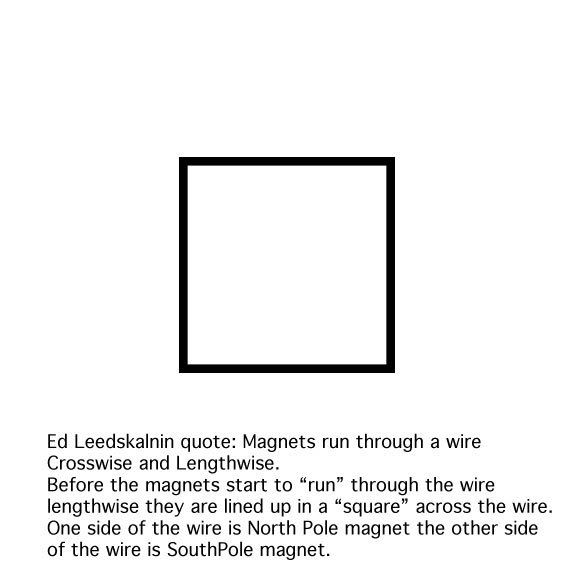 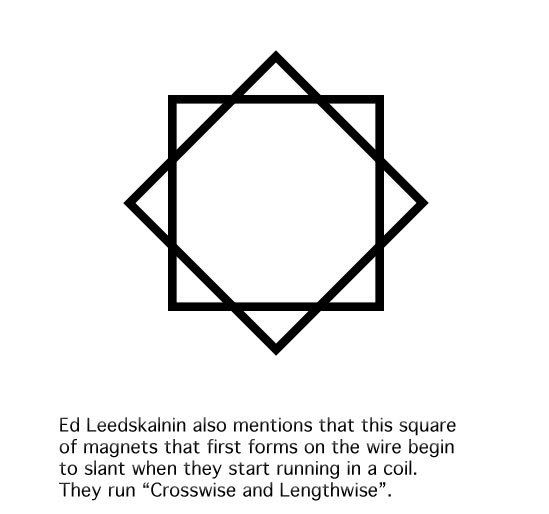 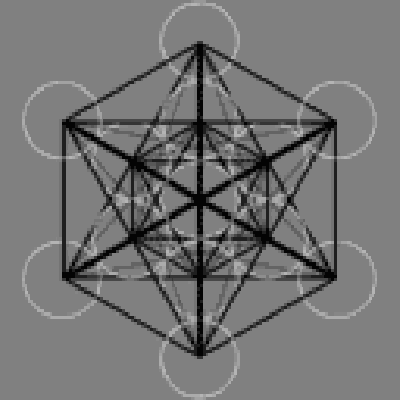 345 345 345 Those three numbers represent the right angle triangle and this next image represents why we need 345. Because 345 is connected intimately to the double helix.   Whether it is man or the grand architect...THEY must use right triangles...understand that....to build empires using light/EM. Now imagine the forces that can move those blocks here on earth, being the same forces that resurrect themselves in 2012. The Lorentz factor (a.k.a. the butterfly effect) is all about 345 and the right triangle. Our DNA builds using 345. 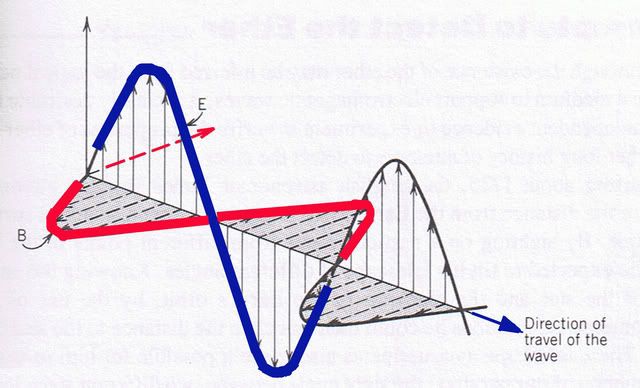  Can you see the wings of the butterfly in the above two photos? Can you see the two S figures? Thus can you see the SS, the Spiritus Sanctus know also as the Holy Spirit?  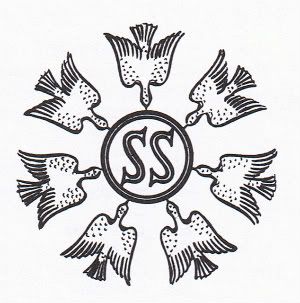 A shifting...morphing Electro-magnetic Field...IS the Holy Spirit/Holy Grail...I can feel it.And VENUS was her name and she looks hot in RED A shifting...morphing Electro-magnetic Field...IS the Holy Spirit/Holy Grail...I can feel it.And VENUS was her name and she looks hot in REDAnd the goddess looks hot ... Hell YES ... count me, err us both in. 2bee continued of course namaste golem / Raphael |
|
|
 Primer Primer
 Anterior
32 a 46 de 91
Siguiente Anterior
32 a 46 de 91
Siguiente Último
Último
|
|
| |
|
|
©2024 - Gabitos - Todos los derechos reservados | |
|
|

